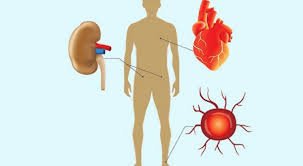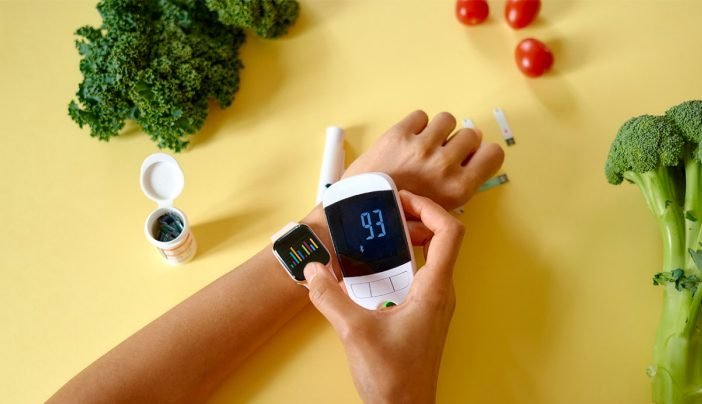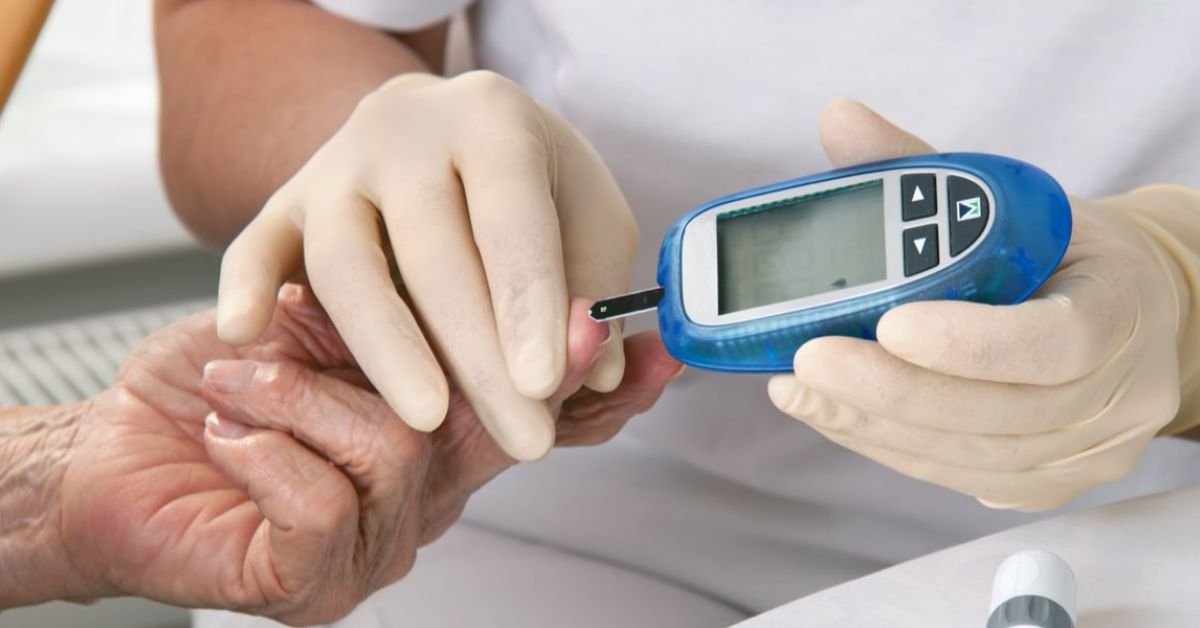When you visit your doctor or get a health checkup, one of the most common numbers discussed is your blood glucose also known as blood sugar. But what does it really mean when you hear that your glucose is “high”? Why does it matter? And what can you do about it?
High glucose levels are becoming increasingly common, with millions of people affected worldwide. High glucose is not just a number it’s a signal from your body about your current health and your future risk for serious conditions, especially diabetes. Understanding what does high glucose means, why it happens, and how to manage it can empower you to protect your health for years to come.
This guide answers all your questions about high glucose what it is, why it matters, how it’s diagnosed, what causes it, its symptoms, the dangers of ignoring it, and how to manage or even reverse it with smart lifestyle changes.
What Is Glucose?
Glucose is a type of sugar and the body’s main source of energy. It comes from the food you eat—especially carbohydrates such as bread, rice, fruits, and sweets. After eating, your digestive system breaks down these foods into glucose, which enters your bloodstream.
Your body relies on glucose for:
- Powering every cell, organ, and tissue
- Fueling your brain and muscles
- Supporting growth, healing, and daily functioning
A hormone called insulin, produced by your pancreas, helps move glucose from your blood into your cells to be used for energy. The balance between glucose and insulin is crucial for good health.
What Does High Glucose Mean?
High glucose, or hyperglycaemia, means that the level of sugar in your blood is higher than normal. This can happen for many reasons, from what you eat to how your body processes sugar. When you have high glucose, your body either doesn’t make enough insulin, doesn’t use it effectively, or both.
Key points:
- High glucose can be temporary (after eating a big meal or due to stress) or persistent (which may signal diabetes or other health issues).
- High glucose over time can damage organs, blood vessels, nerves, and more.
A single high glucose reading doesn’t always mean there’s a problem, but frequent or persistent high levels are a red flag that needs attention.
Types of High Glucose: Fasting, Random, and Postprandial
There are several ways to measure and interpret high glucose, including:
1. Fasting Blood Glucose
- Measured after not eating or drinking anything (except water) for at least 8 hours.
- Normal fasting glucose: 70–99 mg/dL (3.9–5.5 mmol/L)
- High fasting glucose: 100 mg/dL (5.6 mmol/L) or higher
2. Random Blood Glucose
- Measured at any time, regardless of when you last ate.
- Normal: Usually less than 140 mg/dL (7.8 mmol/L)
- High: 200 mg/dL (11.1 mmol/L) or higher may indicate diabetes (especially with symptoms)
3. Postprandial Blood Glucose
- Measured 2 hours after eating.
- Normal: Less than 140 mg/dL (7.8 mmol/L)
- High: 140 mg/dL (7.8 mmol/L) or higher
4. HbA1c (Glycated Haemoglobin)
- Reflects your average blood glucose over 2-3 months.
- Normal: Below 5.7%
- Pre-diabetes: 5.7%–6.4%
- Diabetes: 6.5% or higher
Each type gives a different picture of your blood sugar control.
Causes of High Glucose
High glucose can result from many factors, including:
- Diet: Eating large amounts of sugar or refined carbs
- Physical inactivity: Less movement means glucose is not burned for energy
- Obesity: Increases insulin resistance
- Stress: Hormones like cortisol raise blood sugar
- Illness or infection: Body releases stress hormones
- Medications: Steroids, diuretics, and others can increase glucose
- Pancreatic problems: Issues with the pancreas (like pancreatitis) affect insulin
- Genetics: Family history of diabetes or metabolic syndrome
- Hormonal changes: Such as pregnancy, puberty, or menopause
For some, high glucose may only happen during certain situations, while for others it can be a chronic issue.
Symptoms of High Glucose
High glucose may develop slowly and often goes unnoticed until levels are very high. Some classic symptoms include:
- Excessive thirst
- Frequent urination
- Fatigue and weakness
- Blurred vision
- Headaches
- Dry mouth and skin
- Slow healing of wounds
- Unintended weight loss (in some cases)
- Recurrent infections (skin, gums, urinary tract)
Note: Mildly high glucose may not cause any noticeable symptoms at all, which is why regular screening is important.
Short-Term Risks of High Glucose
Even a single episode of very high glucose can have serious effects, such as:
- Dehydration: Excess sugar in the blood pulls water out of your cells.
- Electrolyte Imbalance: Changes in sodium and potassium can affect the heart and muscles.
- Diabetic Ketoacidosis (DKA): Dangerous build-up of acids (mainly in type 1 diabetes) can be life-threatening.
- Hyperosmolar Hyperglycaemic State (HHS): Severe dehydration and extremely high blood sugar (mainly in older adults with type 2 diabetes).
Short-term high glucose requires prompt medical attention if you develop confusion, vomiting, rapid breathing, or loss of consciousness.
Long-Term Dangers of High Glucose

Chronic high glucose is much more dangerous. Over time, it can cause damage throughout the body:
- Heart disease and stroke: Glucose damages blood vessels, raising risk for heart attack and stroke.
- Kidney damage (nephropathy): Can lead to kidney failure.
- Nerve damage (neuropathy): Tingling, numbness, pain especially in the feet.
- Eye problems (retinopathy): Risk of blindness.
- Poor circulation: Increases risk of infections and amputations.
- Gum disease and tooth loss.
The higher and longer your glucose is elevated, the greater the risk.
How High Glucose Is Diagnosed
Doctors use a combination of tests to diagnose high glucose:
- Fasting blood glucose test
- Random blood glucose test
- Oral glucose tolerance test (OGTT): Measures blood sugar before and after drinking a sweet liquid
- HbA1c test: Shows average glucose over 2-3 months
- Urine tests: May show glucose or ketones
If you have symptoms or risk factors, regular screening is recommended.
Normal vs High Glucose Ranges
Here’s a simple chart:
| Test Type | Normal | Prediabetes | Diabetes |
|---|---|---|---|
| Fasting Glucose | <100 mg/dL | 100-125 mg/dL | ≥126 mg/dL |
| 2hr Post-Meal | <140 mg/dL | 140-199 mg/dL | ≥200 mg/dL |
| Random Glucose | <140 mg/dL | — | ≥200 mg/dL + symptoms |
| HbA1c | <5.7% | 5.7-6.4% | ≥6.5% |
Risk Factors for High Glucose
You’re more likely to have high glucose if you:
- Are overweight or obese
- Have a family history of diabetes
- Are over age 45
- Live a sedentary lifestyle
- Have high blood pressure or cholesterol
- Had gestational diabetes during pregnancy
- Belong to certain ethnic groups (South Asian, African, Hispanic, Native American)
- Have polycystic ovary syndrome (PCOS)
High Glucose and Diabetes
Diabetes is the most common condition linked to high glucose. There are two main types:
Type 1 Diabetes
- The body doesn’t make insulin (autoimmune).
- Usually develops in children or young adults.
Type 2 Diabetes
- The body doesn’t use insulin well (insulin resistance).
- More common in adults but increasingly seen in children.
Pre-diabetes
- Blood glucose is higher than normal but not yet diabetes.
- Without intervention, most people with pre-diabetes develop type 2 diabetes within 10 years.
High Glucose in Non-Diabetics
You can have high glucose without having diabetes, especially:
- During times of illness, stress, or after high-carb meals
- Due to medications like steroids
- With hormonal changes (pregnancy, menopause)
- In certain medical conditions (Cushing’s syndrome, pancreatitis)
For some, high glucose is a temporary issue. For others, it’s a warning sign of future diabetes risk.
Complications Linked to High Glucose
Unchecked high glucose leads to many health problems:
- Cardiovascular disease
- Kidney failure
- Vision loss
- Nerve damage
- Foot ulcers and amputations
- Skin infections
- Impaired wound healing
Prevention and early treatment are key.
How to Prevent High Glucose

You can lower your risk and prevent high glucose by:
- Eating a balanced diet (low in refined sugar/carbs, high in fibre, healthy fats, and protein)
- Maintaining a healthy weight
- Exercising regularly (at least 150 minutes of moderate activity per week)
- Managing stress
- Getting enough sleep
- Avoiding smoking and limiting alcohol
Annual checkups and regular blood sugar testing are recommended for everyone, especially if you have risk factors.
How to Lower High Glucose Naturally
If your glucose is creeping up, these strategies can help:
Nutrition Tips
- Focus on low-glycaemic foods: Vegetables, whole grains, nuts, lean proteins
- Avoid sugary drinks and processed foods
- Eat smaller, more frequent meals
- Include fibre in every meal
- Choose healthy fats: Olive oil, avocados, fatty fish
Lifestyle Habits
- Exercise regularly: Walking, swimming, cycling, strength training
- Stay hydrated
- Get 7-9 hours of quality sleep
- Manage stress: Yoga, meditation, hobbies
Monitoring
- Track your blood sugar levels
- Use a glucometer as advised by your doctor
- Note how food, activity, stress, and illness affect your readings
Medical Treatments for High Glucose
If lifestyle changes aren’t enough, your doctor may recommend:
- Oral medications: Such as metformin, sulfonylureas, DPP-4 inhibitors, SGLT2 inhibitors, etc.
- Insulin therapy: For type 1 diabetes or advanced type 2
- Other injectables: GLP-1 agonists
- Treatment of underlying conditions: Such as infections or hormonal problems
Medication should always be individualized and monitored by your healthcare provider.
High Glucose and Children
High glucose is rising among children due to poor diet, obesity, and lack of physical activity. Symptoms in kids include:
- Increased thirst and urination
- Unexplained weight loss
- Fatigue
- Mood changes
Early detection is crucial to avoid long-term health problems.
High Glucose in Pregnancy (Gestational Diabetes)
Pregnant women can develop high glucose, called gestational diabetes. It increases risks for:
- Large birth weight babies
- Premature delivery
- Preeclampsia
- Later development of type 2 diabetes (mother and child)
Managing gestational diabetes involves diet, exercise, and sometimes insulin.
High Glucose Emergency: When to Seek Help
Seek immediate medical help if you experience:
- Vomiting and dehydration
- Trouble breathing
- Severe confusion
- Drowsiness or unconsciousness
These can be signs of diabetic ketoacidosis or hyperosmolar hyperglycaemic state life-threatening complications.
Living Well With High Glucose: Lifestyle Tips
A diagnosis of high glucose doesn’t mean life is over. With the right approach, you can manage or even reverse it.
- Stay active every day: Even short walks help
- Cook more meals at home
- Read food labels carefully
- Find a support group or diabetes educator
- Schedule regular checkups
- Celebrate small wins every positive choice counts!
Must Read:
FAQs:
Q: What does high glucose mean in a blood test?
A: It means your blood sugar level is higher than normal and may signal diabetes, prediabetes, stress, illness, or medication effects.
Q: Can high glucose be reversed?
A: In many cases, especially early or mild elevations, healthy eating, regular activity, and weight loss can return glucose to normal.
Q: What foods increase glucose the most?
A: Refined sugars, white bread, pastries, sweetened drinks, and most processed snacks.
Q: How often should I check my glucose?
A: As advised by your doctor. People at risk or with diabetes may check daily; others may only need yearly screening.
Q: What’s the difference between high fasting glucose and high post-meal glucose?
A: Fasting glucose measures baseline sugar levels; post-meal glucose shows how your body handles a glucose “challenge.”
Final Words: Why High Glucose Matters
Understanding what does high glucose mean is the first step to protecting your health. High glucose is a warning sign that your body’s delicate balance is off. Left unchecked, it leads to serious health risks—but the good news is, you have the power to control it.
By learning about your glucose levels, adopting healthy habits, and working closely with your healthcare team, you can live a full, active, and healthy life now and for years to come.
Take charge of your health today. Know your numbers, make smart choices, and remember: every step toward balanced glucose is a step toward a better you.

